Super Typhoon Rai was the strongest storm to hit the Philippines in 2021.
High windspeeds of 195kph caused widespread devastation. They destroyed more than half a million homes across the archipelago of islands.
As the storm made landfall, tens of thousands of people evacuated to stay in collective facilities or with friends and family.
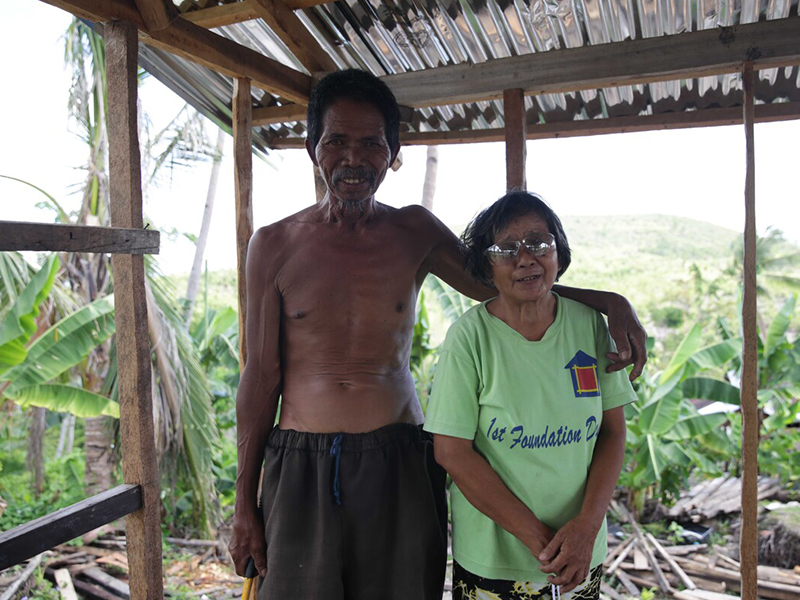
“No, we didn’t know [Rai was coming]. We didn’t even leave our house right away. By around 7pm I did not think it was going to get worse because the wind kept subsiding. By 9pm it became worse, it was like my house was dancing in the wind.
“That’s when we evacuated to our neighbours house. We were running, it was so dark. We were very frightened, our house was already shaking. I thought we would die if we stayed there, we could have been crushed by the roof.”
– Moises
A response led by the community
When the storm subsided, people returned to their homes to see what was left and assess the damage. People were quick to use what they could find to make temporary shelters.
They salvaged materials from the wreckage and made simple makeshift structures. Gnarled bits of corrugated iron were bent into shape and crudely fixed to frames constructed from the debris. People repurposed rice bags and signage boards to form walls and roofs.
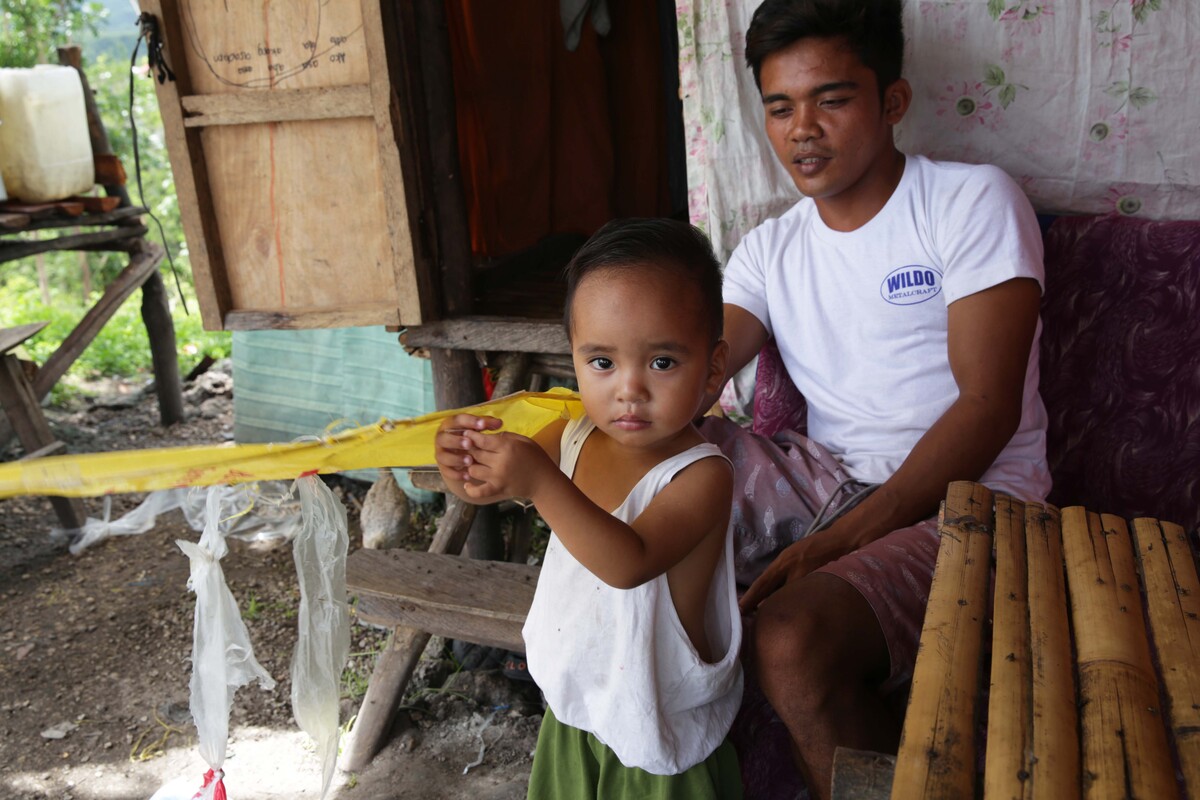
“There was nothing left. All of the roofs were gone. We made a temporary shelter out of the salvaged materials that we were able to retrieve. It was very hard. It was hard when we were asleep and it suddenly rained, we all got very wet. We didn’t have any walls, it was all gone.”
– Rowell
The path to recovery isn’t a simple one. Take a look at what barriers people had to overcome to recover after Typhoon Rai:
Taking difficult decisions
After a disaster like a typhoon, people prioritise their needs. When people have basic shelter, they can look to find food and water, farming and work. And they can also start providing support to the rest of their community.
But with this prioritisation comes sacrifice. Homes may not be big enough for the whole family, or leak because of the building materials. As people in the Philippines focused on reaching the next phase in their journey of recovery, it meant they had to make difficult decisions.
“My wife’s in Manila working. She’s working there to support us with our daily needs. It’s been a long time. My kind of factory work does not pay much. It was only good for our food consumption. It was hard because we can’t afford to rebuild our house.
“My wife can earn more in Manila. At first it was hard but in time I got used to it already. She has not come home ever since she left in January. We talk on the phone every week.”
– Rowell
Coronavirus
The Filipino response to Covid-19 differed little from countries in Europe and the Americas, but without the social welfare system that some countries had in place.
Successive lockdowns not only affected people’s freedom of movement, but also their ability to earn an income. This stretched household finances, and people were already using their savings when Typhoon Rai hit and destroyed thousands of homes.
“Ever since the pandemic there are not many buyers in the market and sales are not good. We were not allowed to go out and go to the market because we were senior citizens already. We let the driver of the truck bring our goods to the market and he will be the one to dispose and sell it. There are times that my crops won’t be paid right away. So we have to look for other ways to buy food and rice for the family. It was very hard for us because prices of commodities were very high and we do not have stable income.” – Antonia
“It’s harder now compared to before. I have my two children here…my husband is jobless. Sometimes he can fish then sometimes he has no catch. It’s harder now. He cannot go back to the city to work. Others would say that he is not vaccinated, that is why he cannot work.” – Violeta
The War in Ukraine
Three months after Typhoon Rai, people were still dealing with the fallout of the storm. Then the war in Ukraine started. And it would impact their recovery journey.
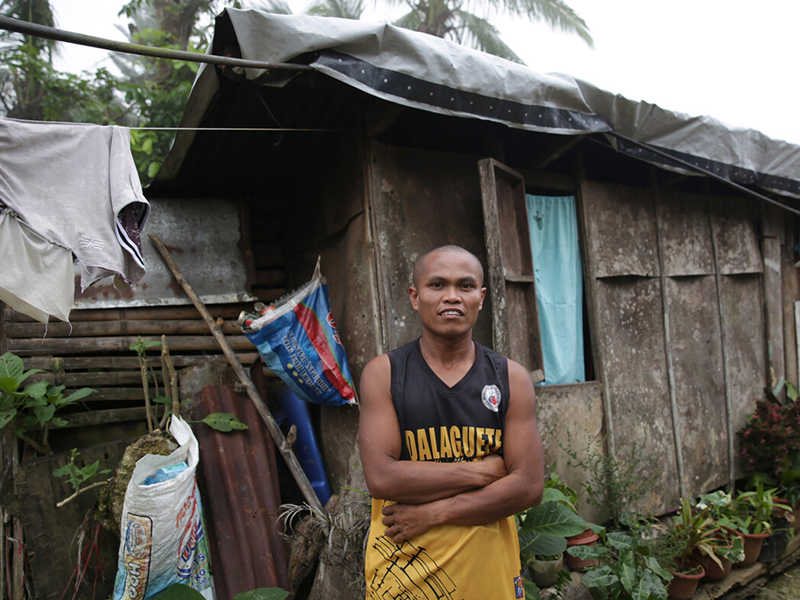
“From the start of the pandemic until Typhoon Odette, our life has been in crisis, and it’s gotten harder because the price of the gasoline has increased because of the war in Ukraine. Our earnings are mostly spent to buy gasoline, and the little money we have left is for our family. We’re really on a tight budget. We just have vegetables to survive.” – Romnick
Inflation and financial uncertainty
With many people rebuilding, there was an increased demand for essential materials. That’s materials like plywood and Corrugated Galvanised Iron (CGI). Inevitably, this led to price increases in local markets.
People could buy less with their money, reducing the impact that their available finance had on recovery. In addition, there weren’t enough skilled labourers to meet the increasing demand. That’s people who, for example, mill coco lumber to make construction materials.
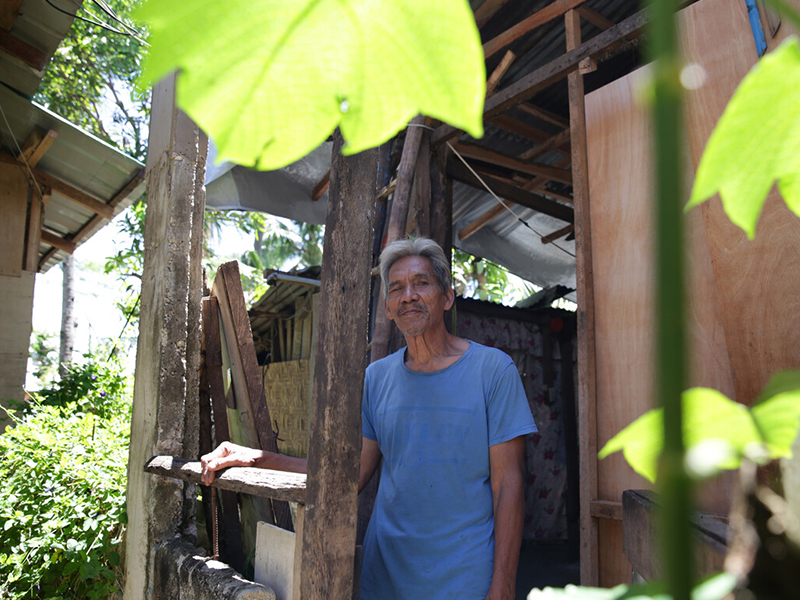
“The repair [on the house] stopped for the meantime because I don’t have enough materials. I am waiting for them to be complete but I can’t buy more for now. I only have six pieces of plywood. The plywood is so expensive now because of the typhoon – it has doubled in price.
“The hardware store owners are taking advantage of the situation because people really must buy materials to fix their houses. The price of lumber has also increased and will continue to do so. For people who don’t have much money, that’s what they use – it’s [coco lumber] the most accessible and affordable material to build a house.” – Felix

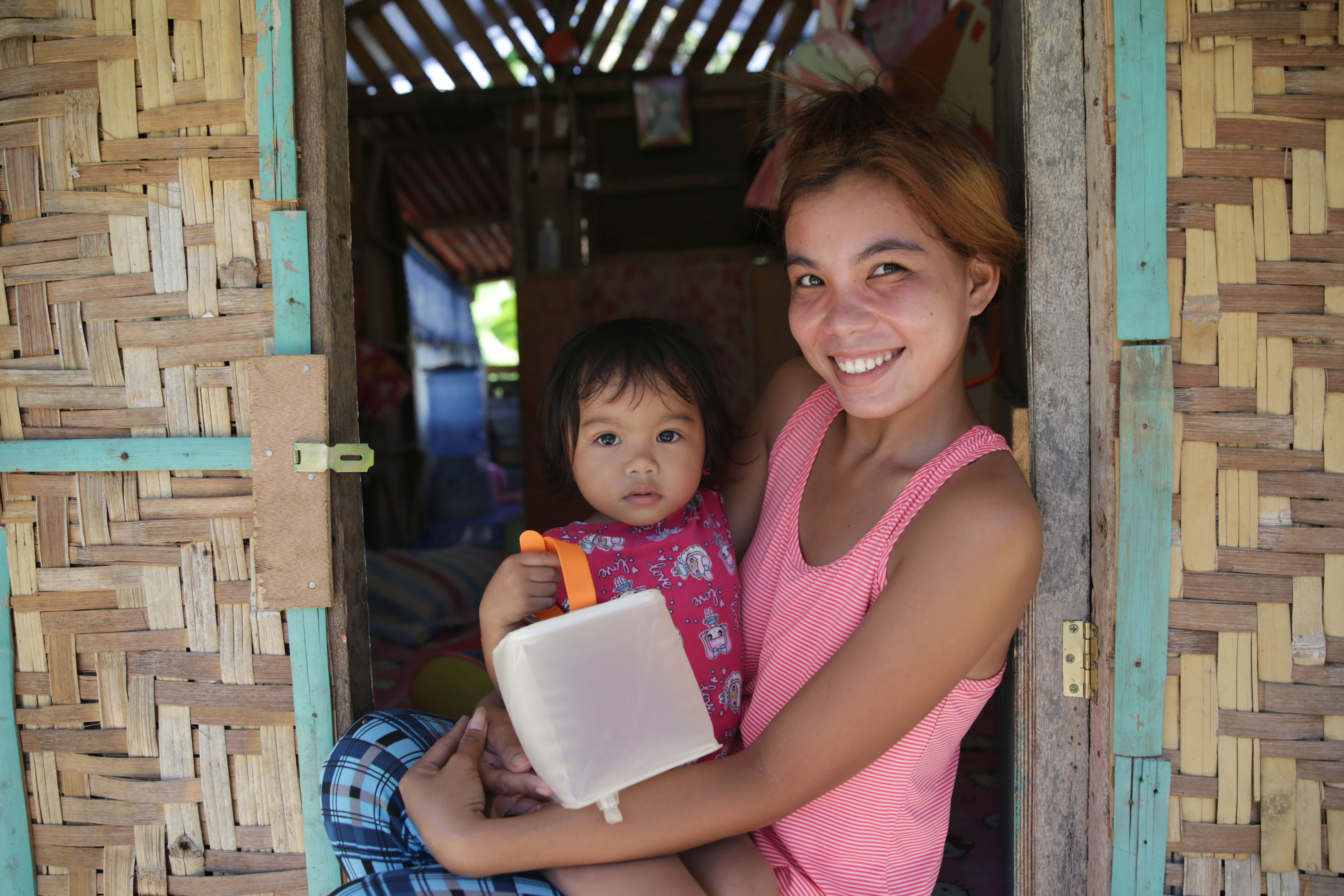
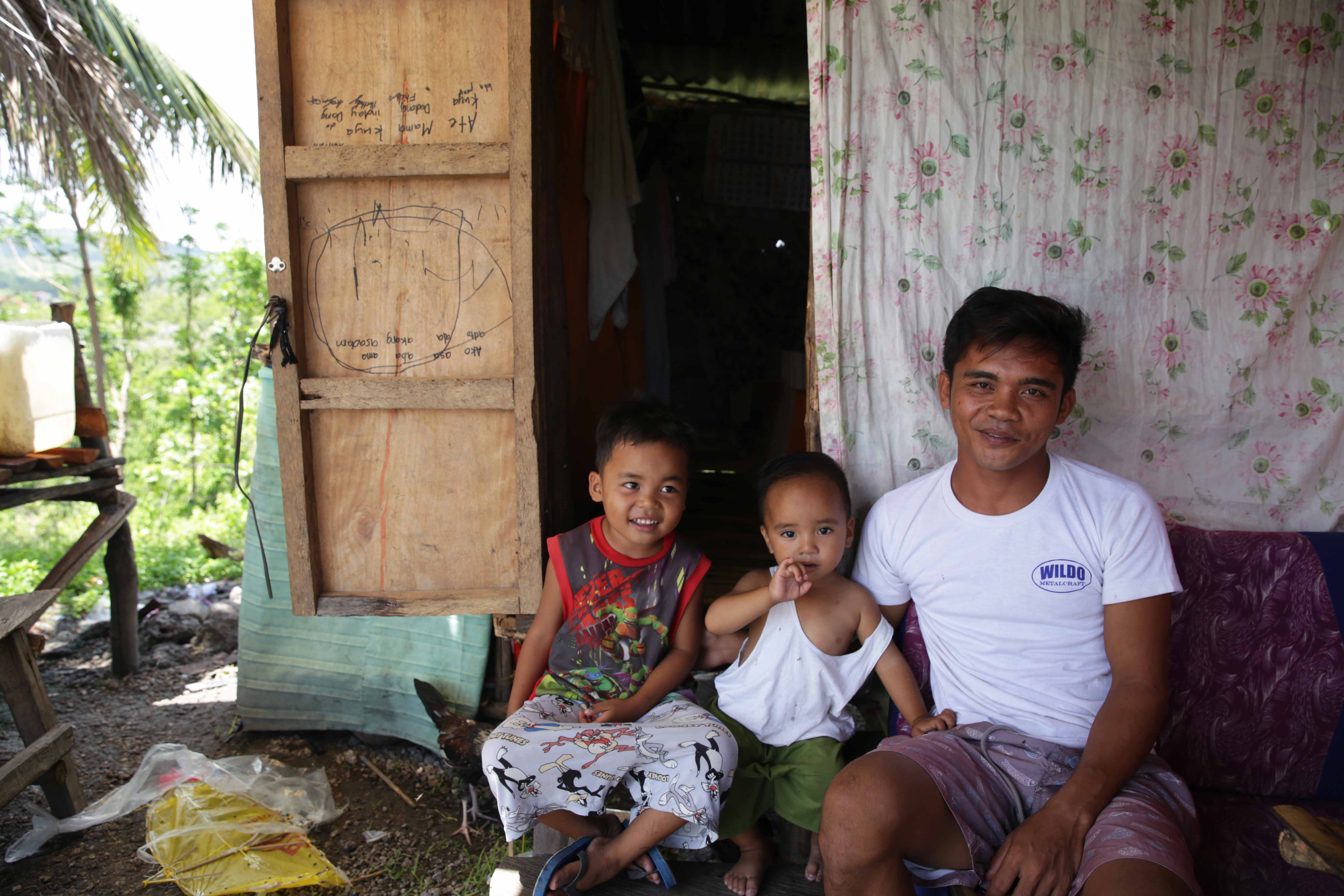
Social networks
Social support networks were critical to how people met their immediate and longer-term needs after Typhoon Rai.
Family members and friends provided loans or financial gifts. These enabled people to buy building materials, labour and expertise to help with repair and construction.
“My son started to fix [the roof] slowly since he is a carpenter. He was helped by my other sons. My three sons are carpenters. They were the ones fixed it. I have also another child living in Cagayan de Oro who is giving me money to buy food. When I get sick, she’s just one call away. She would send me money to buy medicine.” – Asteria
How shelter enabled the relief phase
ShelterBox supported around 19,000 families across the islands of Bohol and Cebu. People received items like tarpaulins and tools, but also training.
The aid items and training helped to improve living conditions in the weeks following the storm. We supported communities in weatherproofing homes, extending buildings or creating more stable structures.
“We were happy to receive the ShelterBox kit because we have solar light and especially the tarpaulin was very useful. Upon receiving the tarpaulin, we immediately installed it on our roof.” – Cecille
“We just transferred here after putting this up. My husband built it as a temporary shelter where we can sleep. We built it after receiving the tarpaulin. We used it as a roof. Some are the materials from our previous house. We are much better here, and we are glad that we have our own space. We all sleep here because it is more comfortable.” – Ginalyn
How shelter made a difference during the early recovery
Some people received Corrugated Iron sheeting which enabled them to build more durable shelters. But the timing of this type of aid item is critical.
If it is provided too soon, people may not yet have the stable structures needed to fix materials to, or the time and money needed to take advantage of it. In Bohol, cash support was also given with CGI, to help increase the impact it could have on people’s homebuilding.
“[we used the GI sheets] after few weeks because we have to build the scaffolding first. It took us sometime to use them. I couldn’t really use them right away because I am only the one working and there were no woods yet at that time.” – Moises
Self-led Recovery
When communities suffer disaster, they become the drivers of the rebuilding process.
The concept of Self-led Recovery focuses on this reality, rather than the myth that people passively receive assistance.
Yet, the process of recovery is multi-layered and people also draw from a multitude of networks and resources; both formal and informal. Some people will find these easier to access, and thus recover faster. For others, the path to reconstruction can be longer.
Disasters such as typhoons often impact the poorest and most vulnerable communities. This is partly because of the location and the type of homes people live in.
It is in the earliest stages of relief and recovery that people are most sensitive to other shocks and stresses. By providing shelter in this early stage ShelterBox seeks to bolster recovery, enabling people to navigate around the barriers. This strengthens resilience and increases their capacity to self-recover.
Thank you
It is because of the generous support from people like you that we’re able to provide the tools and emergency shelter so that people like Moises and Antonia can start rebuilding their lives after disaster.
Thank you.
Share this